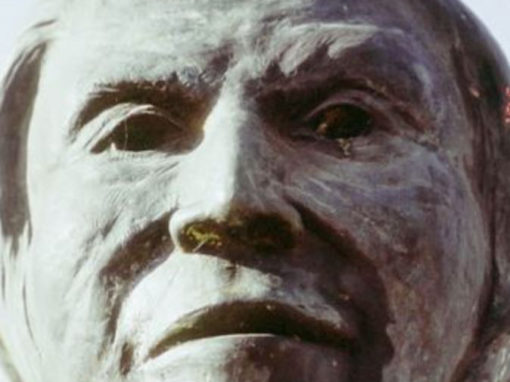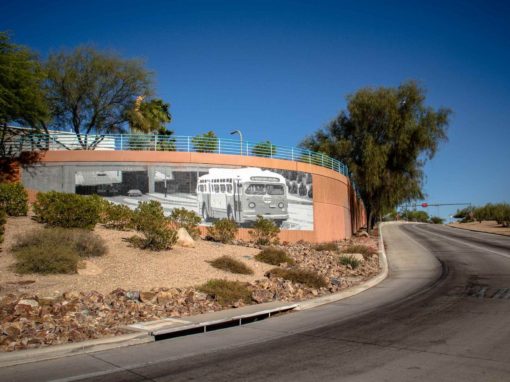
The Santa Cruz Goes Underground
This is a five-panel high relief work in bronze recounting the use and misuse of Santa Cruz River water from the Hohokam period, through the days of Spanish occupation, and up to the end of the 20th century. Up until the late 19th century, the Santa Cruz River was a broad braided stream flowing year round. Its presence made possible ten thousand years of continuous human habitation in the middle of a vast desert. While its appearance today is that of a dry riverbed flanked by embankments, the Santa Cruz still flows deeply underground.The first panel represents the pre-agricultural past with a man striping agave leaves for roasting and include other edible plants such as ground cherry, mesquite beans, and prickly pear cactus. A blue heron symbolizes the riparian habitat. The second panels depicts early agricultural practices of the native Hohokam peoples through a woman in a garden of corn, squash, and sunflowers as well as a Spanish cattle drive, with semi-long horned chinampo breed, along the Camino Real. The third panel represents the 19th century when Tucson experienced rule by Spain, Mexico, and the United States as a territory. Scenes include an Apache cattle raid and fruit and vegetable farming by Chinese immigrants. The fourth panel depicts tow of Tucsons prosperous 19th century pioneering residents: Solomon Warner who damned the river to power his flourmill and Sam Hughes, who cut the riverbank to channel water away from ranchers. The final panel depicts current day neighborhood residents planting trees in a bid to reclaim the native riparian habitat. A dry hose bib serves to remind us of the fragility of life in this burgeoning desert community.
Art Form: Sculpture
Location: Westside
Collection(s): City of Tucson
Funding: Department of Transportation
Artist(s): Melody Peters
Artist Melody Peters designed and sculpted a pictorial relief describing five distinct periods of Tucson's history with varying occupants, plants, animals and man, coexisting with the flowing and then diminishing Santa Cruz River. Peters created molds using oil-based clay, which were then used to cast the bronze panels.
Address: Silverlake Rd. near Santa Cruz Ln.


